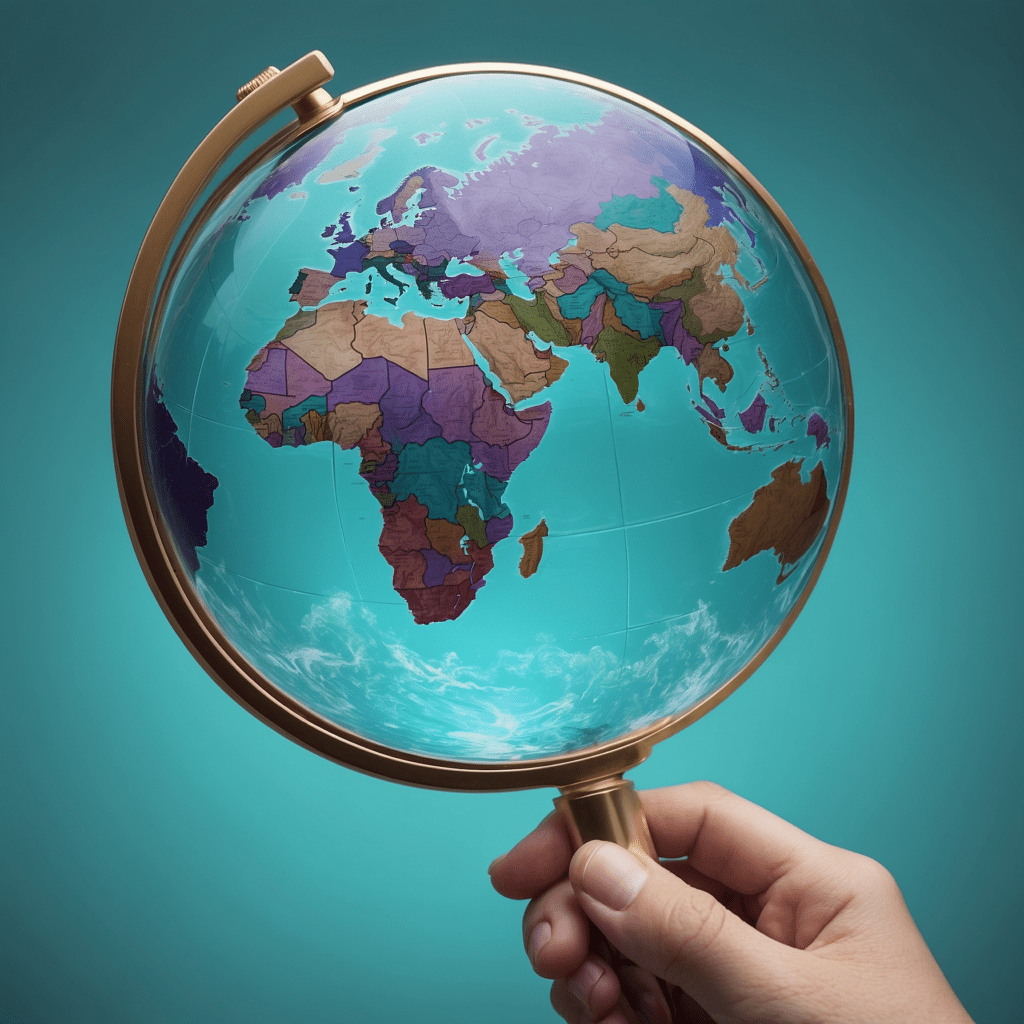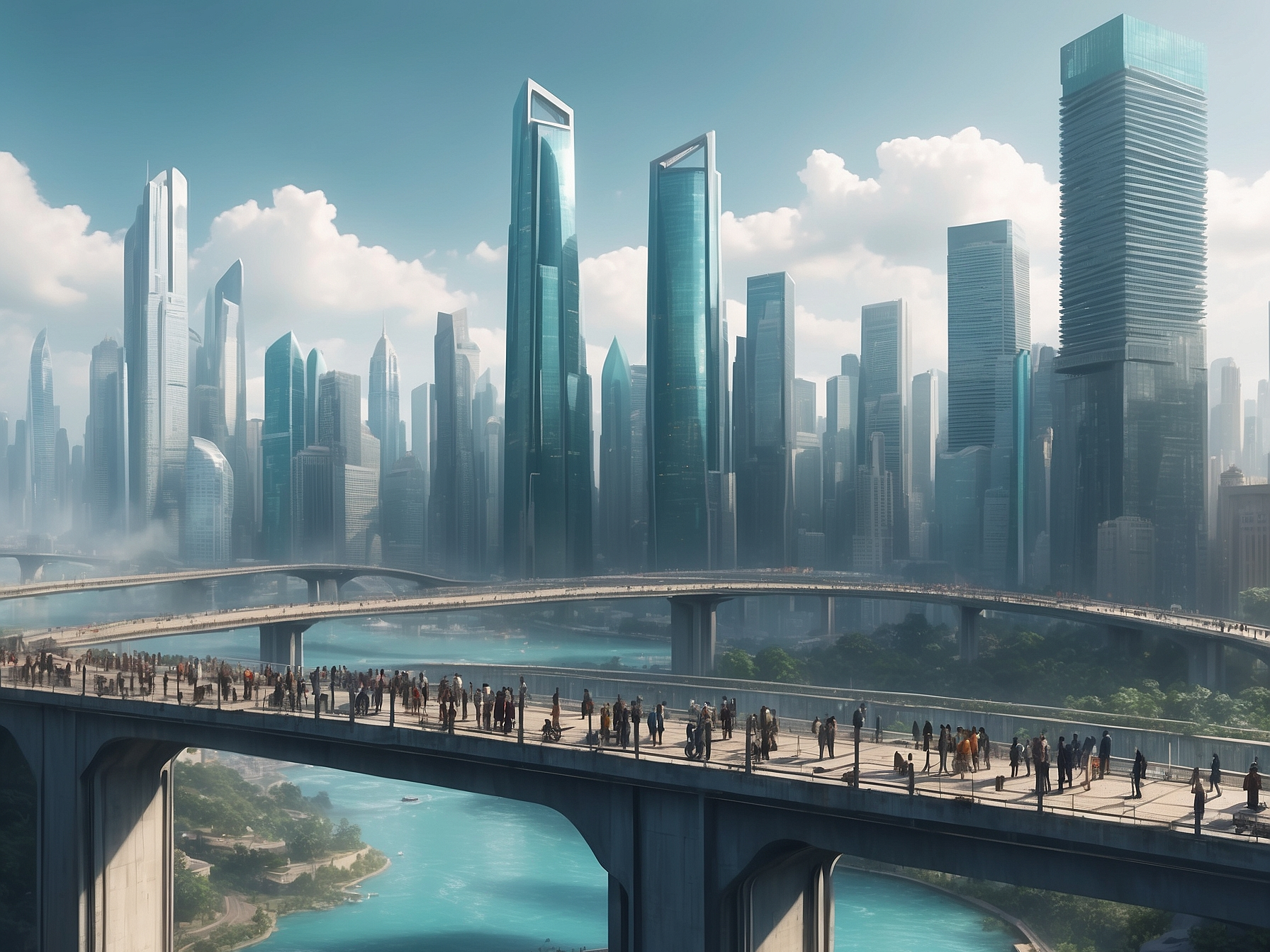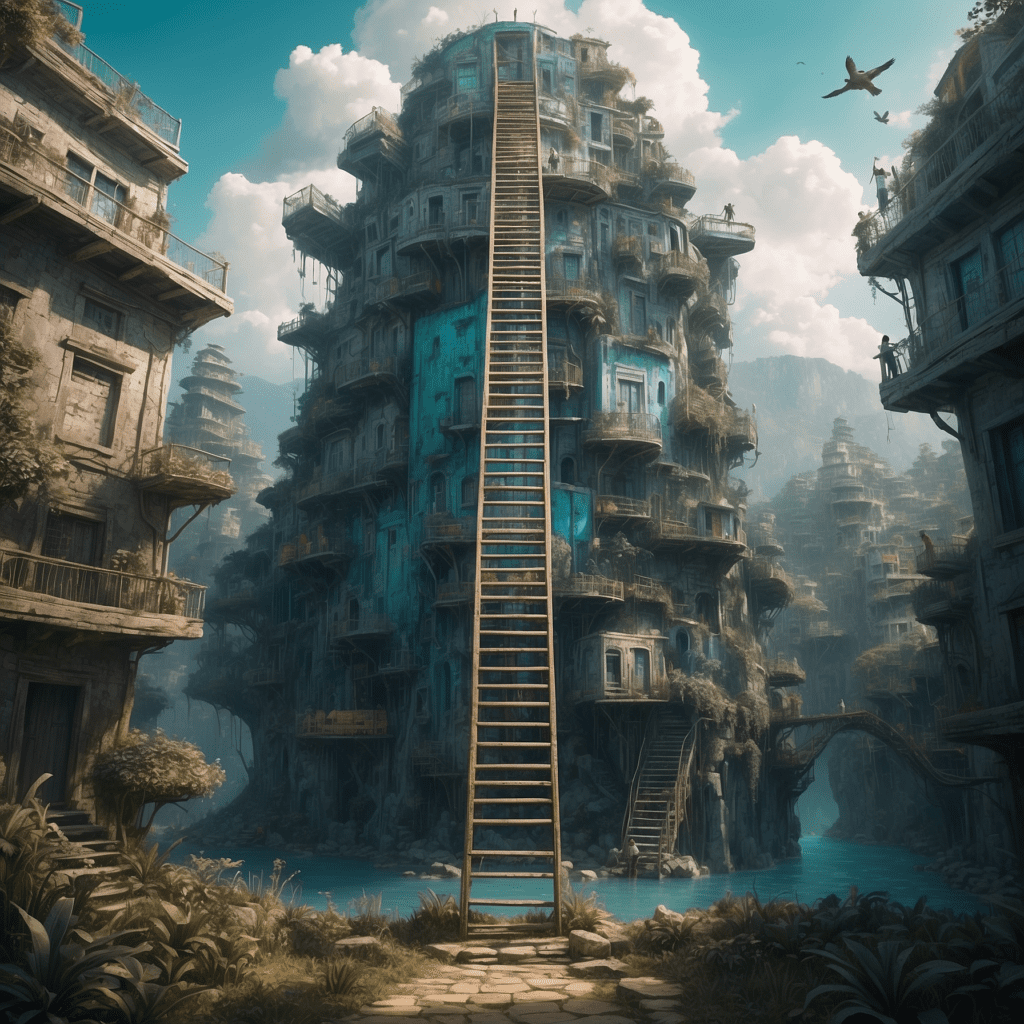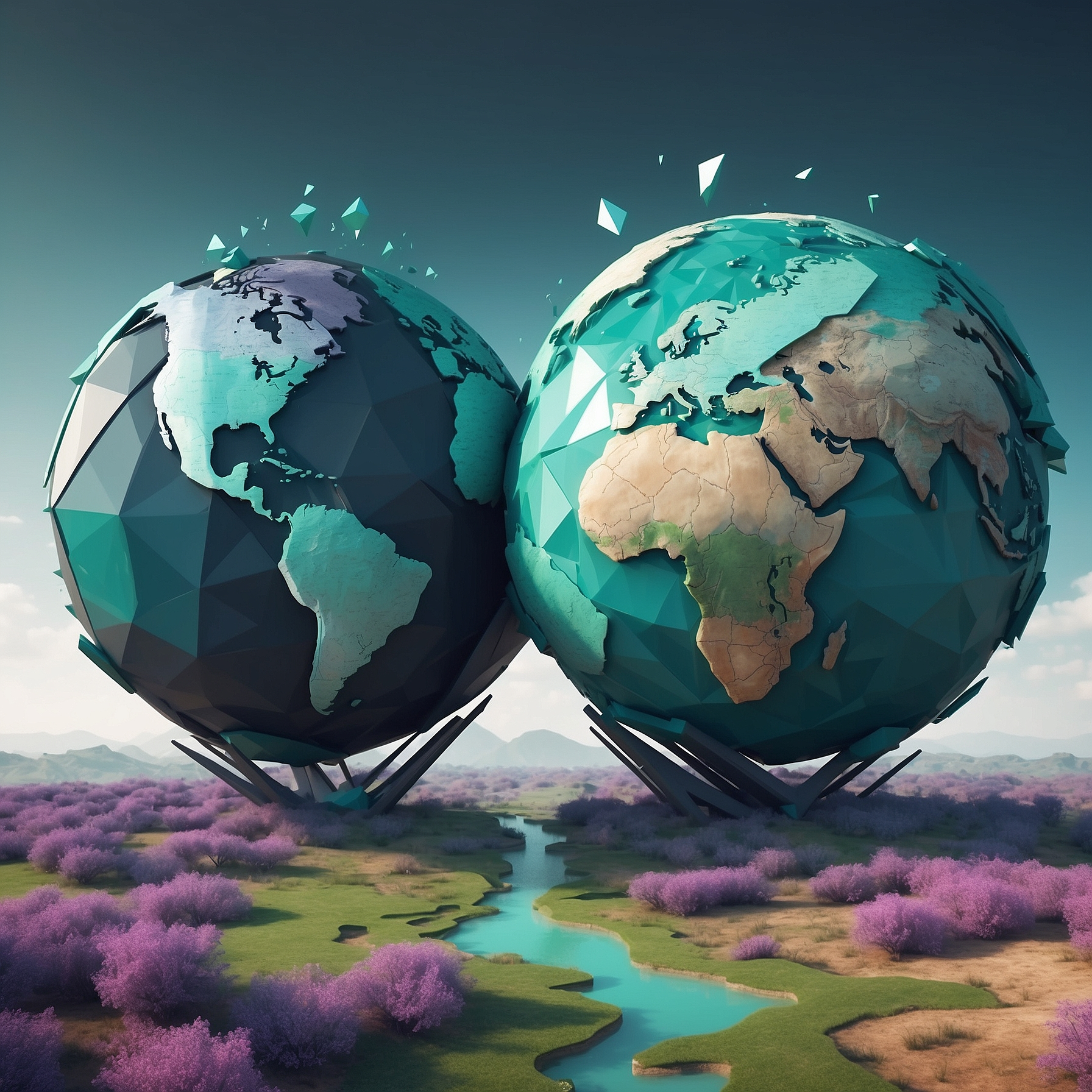Emerging countries vs developing countries—sounds like economic jargon that’s easy to mix up, right? Like trying to tell the difference between “almost ripe” and “not quite there yet” avocados. But in the global financial arena, these labels are a big deal.
Think of emerging and developing countries as being on different levels of the economic ladder. International heavyweights like the World Bank and the International Monetary Fund (IMF) use these classifications to decide who gets financial aid, loans, and all sorts of economic perks. They look at factors like economic growth, market size, income levels, and whether the country’s infrastructure is up to par (roads, schools, Wi-Fi—you know, the essentials).

But let’s face it, distinguishing between “emerging” and “developing” can feel like trying to solve a Rubik’s Cube blindfolded. Both types of countries often have abundant natural resources and are striving for better economic conditions. So, what’s the real difference? Buckle up; we’re about to break it down without putting you to sleep.
The Human Development Index (HDI) is one tool used to measure a country’s level of development. It factors in life expectancy, education levels, and Gross Domestic Product (GDP) per capita. Think of it as the ultimate report card for nations. Generally, emerging countries score somewhere in the middle, while developing countries are still working on pulling up their grades.
In this article, we’ll dive into what sets emerging countries apart from developing countries. We’ll also touch on their similarities—because even in economics, it’s not all black and white.
See also: Free Enterprise vs Capitalism: Differences and Similarities
What Are Emerging Countries?
The term “emerging countries” was coined by economist Antoine Van Agtmael back in 1981. Think of these nations as the world’s economic teenagers—not quite adults, but no longer kids either. They’re transitioning from developing to developed status, with rapidly growing economies and industrial sectors. They’re the new kids on the block, and everyone’s starting to take notice.

Thanks to this rapid growth, they’re boosting productivity levels and seeing significant increases in their GDP. They’re like startups that have moved out of the garage and are now scaling up fast.
According to economist Laurence Daziano, you can spot an emerging country if it ticks these five boxes:
- Large Population: Over 100 million people. More people mean a bigger workforce and a larger market.
- Sustained Growth: Potential for a 5% growth rate over the next decade. They’re on an economic treadmill set to sprint.
- Urbanization: At least 50% of the population lives in urban areas, and that number is climbing. City life fuels industrial growth.
- Infrastructure Boom: Rapid development of roads, bridges, and utilities to support economic expansion.
- Political Stability: A stable government that can implement long-term projects without constant upheaval.
Vladimir Kvint adds another layer in his book, The Global Emerging Market: Strategic Management and Economics. He describes emerging markets as societies moving away from dictatorship towards free-market economies. They’re embracing economic freedom, integrating with the global marketplace, and seeing an expanding middle class. It’s like they’re trading in an old clunker for a shiny new sports car.
Characteristics of Emerging Countries
One standout characteristic of emerging countries is their large, often young, population. This provides a robust workforce to fuel industrial growth. More people working means higher productivity and, ideally, a better standard of living. It’s like having a football team with a deep bench—you’ve got plenty of players to keep the game going strong.
As industries expand, these countries produce more goods than their local markets can consume. The result? Booming export sectors. They’re not just feeding their own people; they’re supplying goods globally, which brings in foreign currency and boosts GDP.
Investors are usually keen on emerging markets because they offer higher returns. Sure, there’s some risk involved—market volatility is a thing—but the potential rewards make it worth a roll of the dice. It’s the financial equivalent of investing in a promising startup rather than a steady, established company.
All these factors combine to create rapid economic growth. Emerging countries often adopt a free-market economy or a mixed economy to encourage both domestic and foreign investments. They’re opening their doors to the global market, and it’s paying off.
See also: LME vs. CME: Coordinated Market Economy vs. Liberal Market Economy
What Are Developing Countries?
Developing countries are nations that haven’t yet hit high levels of economic, social, and human development. Think of them as plants that are still seedlings—not yet blooming but slowly growing. Key indicators include low income levels, limited access to healthcare and education, and infrastructure challenges like inadequate roads or unreliable water systems.
Compared to developed countries like Switzerland, the United Kingdom, or the United States, developing nations often grapple with higher poverty and unemployment rates, as well as lower literacy levels. It’s like they’re playing the same game but without the latest gear or a full team roster.

These countries are sometimes referred to as “underdeveloped” or “less developed,” though those terms can sound a bit harsh. Regardless of the label, the reality is that they face significant hurdles to economic advancement.
Characteristics of Developing Countries
High unemployment rates and a heavy reliance on subsistence agriculture are common traits among developing countries. Many people work in farming just to provide for their families, with little or no surplus to sell. It’s like running on a treadmill—you put in a lot of effort but don’t actually go anywhere.
Poor infrastructural development exacerbates the problem. Without good roads, reliable electricity, or clean water, it’s challenging to attract industries or improve productivity. Imagine trying to run a business where the power goes out half the day and the roads are too rough for delivery trucks.
Poverty rates are often high, and many people struggle to afford basic necessities like food, shelter, and clothing. For instance, South Sudan has a poverty rate of 82.3%, indicating dire economic challenges and a pressing need for humanitarian aid.
Low economic activity and limited industrialization result in a low GDP. It’s a vicious cycle: without industry, there’s no growth; without growth, there’s no investment to build industry.
See also: Free Market vs. Regulated Market: Similarities and Differences
Differences Between Emerging Countries vs. Developing Countries
- Access to Funds and Investments
- Market Size
- Level of Production
- Income Level
- Economic Growth
- Type of Government
- Infrastructural Development
Access to Funds and Investments
Emerging economies generally have easier access to funds and attract more investments. Their growing markets and potential for high returns make them attractive to investors willing to take on some risk. It’s like they’re offering a juicy deal that’s hard to pass up.
In contrast, developing countries often struggle to secure funding. The lack of industrialization and stable financial markets makes investors hesitant. Companies in these nations find it challenging to raise capital, stunting their growth potential. It’s a bit like trying to sell ice to Eskimos—not impossible, but definitely an uphill battle.
Market Size
The markets in emerging countries are typically larger and more structured than those in developing countries. They have established stock exchanges and robust import-export systems. For example, China has the Shanghai Stock Exchange, and India boasts the National Stock Exchange.
Developing countries often lack these financial infrastructures. Many don’t have stock markets, which limits opportunities for businesses to raise capital. Their markets are usually smaller and focused on local trade, making it harder to scale economically.
Level of Production
Emerging countries have high levels of production, thanks to rapid industrialization. They’re manufacturing goods not just for domestic consumption but also for export. This boosts economic activity and contributes to GDP growth.
Developing countries, reliant on subsistence agriculture, have low production levels. Without industrial machinery or technology, they can’t produce goods on a scale needed for significant economic growth. It’s like trying to fill a swimming pool with a teaspoon.
Income Level
Generally, emerging countries fall into the lower-middle to upper-middle income categories. That means their gross national income (GNI) per capita ranges between $1,136 and $13,845, according to the World Bank.
Developing countries typically fall into the low-income bracket, with a GNI per capita of less than $1,135. This translates to lower individual earnings and a lower standard of living. It’s the difference between scraping by and having a bit of financial breathing room.
Economic Growth
Emerging countries experience rapid economic growth fueled by industrialization and foreign investments. They’re like cars in the fast lane, accelerating quickly.
On the flip side, developing countries have sluggish economic growth due to poor infrastructure and limited industrial activity. They’re more like bicycles on a rocky path—moving forward but slow and with difficulty.
Type of Government
Most emerging countries have democratic governments and embrace free-market or mixed economies. This political stability and openness to trade encourage both domestic and foreign investments.
Developing countries often have monarchies or dictatorships and may operate under traditional economies. Political instability and restrictive economic policies can deter investment and hamper growth. It’s hard to run a marathon when you’re constantly tripping over obstacles.
Infrastructural Development
Emerging countries invest heavily in infrastructure like roads, power grids, and water systems to support their growing economies. Good infrastructure attracts businesses and makes everyday life better for citizens.
In developing countries, infrastructure is often lacking, especially in rural areas. Poor roads and unreliable utilities make it challenging for industries to operate efficiently. It’s tough to build a skyscraper on a shaky foundation.
See also: Importance of Emerging Markets
Similarities Between Emerging Countries vs. Developing Countries
- Market Volatility: Both can experience market volatility due to factors like political instability, commodity price fluctuations, or global economic shifts. It’s like walking on a tightrope—balance is crucial, but external factors can easily tip the scale.
- Income Overlap: Some countries in both categories fall within the same income brackets. For example, emerging countries like India and Nigeria and developing countries like Vietnam and Zimbabwe are classified as lower-middle-income countries.
- Natural Resources: Both often have abundant natural resources such as minerals, precious metals, or oil. These resources can be a double-edged sword, offering economic opportunities but also attracting exploitation or conflict.
See also: Capitalism vs. Liberalism: Differences and Similarities
Takeaways: Difference Between Emerging and Developing Nations
The difference boils down to several key factors: access to funds and investments, market size, production levels, income levels, economic growth rates, type of government, and infrastructural development.
Emerging nations generally have better access to capital, larger and more structured markets, and democratic governments that support free-market economies. They experience rapid economic growth, higher income levels, and increased production rates. It’s like they’re running a well-oiled machine that’s gaining speed.
Developing nations, in contrast, face limited access to funding, smaller market sizes, and often have authoritarian governments. They lack the infrastructure needed to boost production levels and have lower income levels. Their economic growth is slow, and poverty rates are high. It’s akin to trying to climb a mountain without proper gear.
The table below summarizes the main differences:
| Comparison Criteria | Emerging Nations | Developing Nations |
|---|---|---|
| Market Size | Large and structured | Small and less organized |
| Type of Government | Democratic | Monarchy or dictatorship |
| Production Level | High | Low |
| Per Capita Income | Higher | Lower |
| Living Standards | Higher | Lower |
| Unemployment Rate | Lower | Higher |
| Economic Growth | Rapid | Slow |
| Access to Funds and Investments | Easier | Harder |
| Poverty Rate | Lower | Higher |
| Literacy Rate | Higher | Lower |
| Type of Economy | Industrialized | Agrarian |
| Infrastructural Development | Better | Poor |
